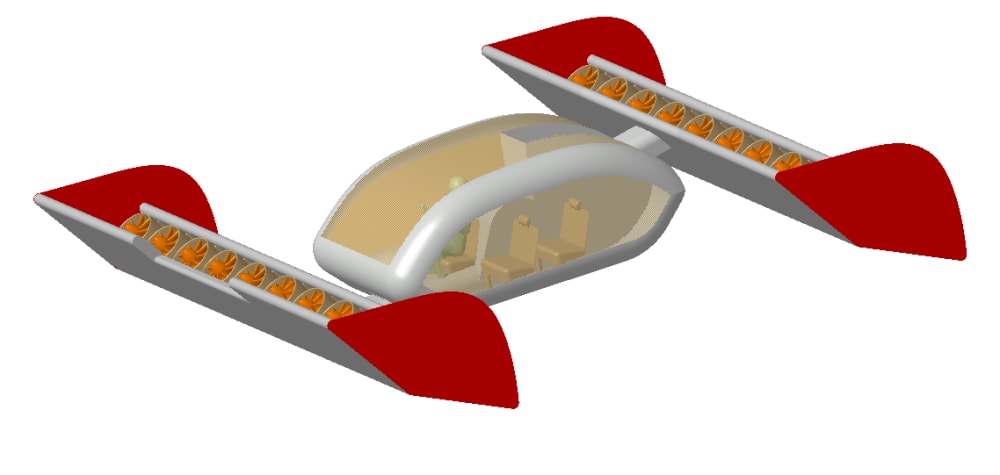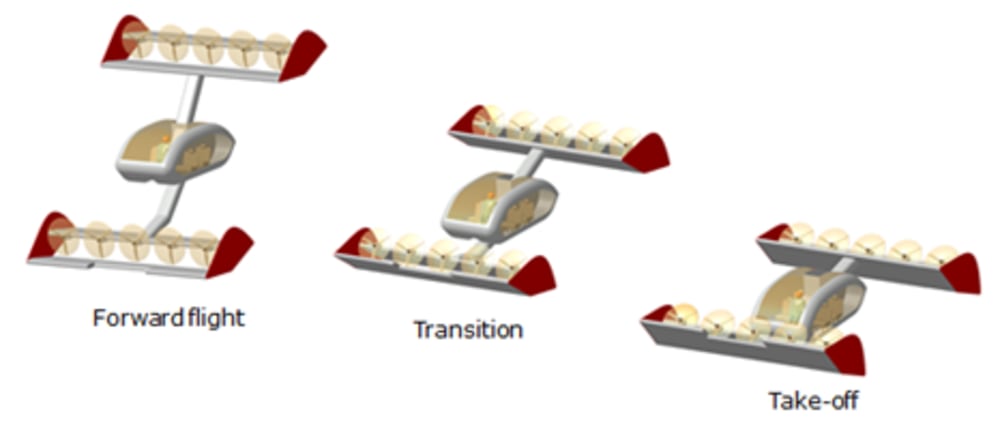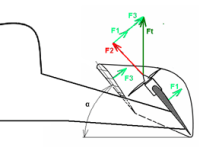Millions of hours are wasted worldwide on the road. The Vertical Take-off and Landing aircrafts (VTOL) have the potential to radically improve urban and interurban mobility, giving people back the time lost in their daily commutes.
Within the present concept we tried to develop a "best in class," advanced personal VTOL aircraft system utilizing the new Distributed Electric Propulsion - DEP, combining the VTOL capabilities of a helicopter with the horizontal speed and payload capability of a traditional airplane. This new Advanced Multi-passenger VTOL Aircraft, for short AMVA, uses a new DEP propulsion system and will provide an accessible and affordable transportation platform from door to door for both civilian and military applications while reducing capital and operating expenses.
AMVA uses two biplanar thrust units merged by a central fuselage, as is shown in the first picture, which represents the vehicle in take off position. The central fuselage has in the middle area a rotating cabin for pilot, passenger or goods.
The new propulsion system with a double biplane wing structure uses a thrust augmenter configuration to increase the lift in both vertical and forward flight as is shown in the second picture. In static conditions and at slow speed, the lift capacity increases as a result of higher circulation around the wings, improving the thrust/weight ratio characteristic of the aircraft. Consequently the weight is balanced by the sum of the thrust produced by the propeller and the lift produced by the wings. Because each front wing of each thrust unit is placed in the inlet region of the propeller it will develop a certain amount of lift due to the pressure difference between the wings’ lower and upper surfaces. On the lower surface, the pressure will be equal to the atmospheric pressure, while on the upper surface, the pressure will be slightly lower. As in the case of the front wing, because each rear wing of each thrust unit is placed in the outlet region of the propeller it will develop a certain amount of lift as well due to the increased pressure exercised on the lower surface of the rear wing.
The rotating cabin is controlled by an actuator which maintains the pilot and the passenger in same position during all flying phases as is shown in the third picture.
AMVA advantages:
- The control of the vehicle is made by thrust differentiation, without pivoting propellers, wings or flaps
- The aircraft construction is simple and cost effective
- The maintenance costs are reduced
- Same propulsion system is used for vertical flight as well as for forward flight
- It uses a thrust augmentation arrangement to increase the lift even in static conditions, resulting a unitary or a subunitary thrust/weight ratio
- In forward flight the lift is produced by the wings
- It is a high efficient vehicle in both vertical and forward flight with improved range
- The propellers are protected against the contact with environment
- Very compact vehicle which uses the entire wingspan to produce lift
- It has amphibious capability
Video
Like this entry?
-
About the Entrant
- Name:Liviu Giurca
- Type of entry:teamTeam members:Liviu Giurca, Michael Soimar
- Software used for this entry:Catia V5
- Patent status:pending








